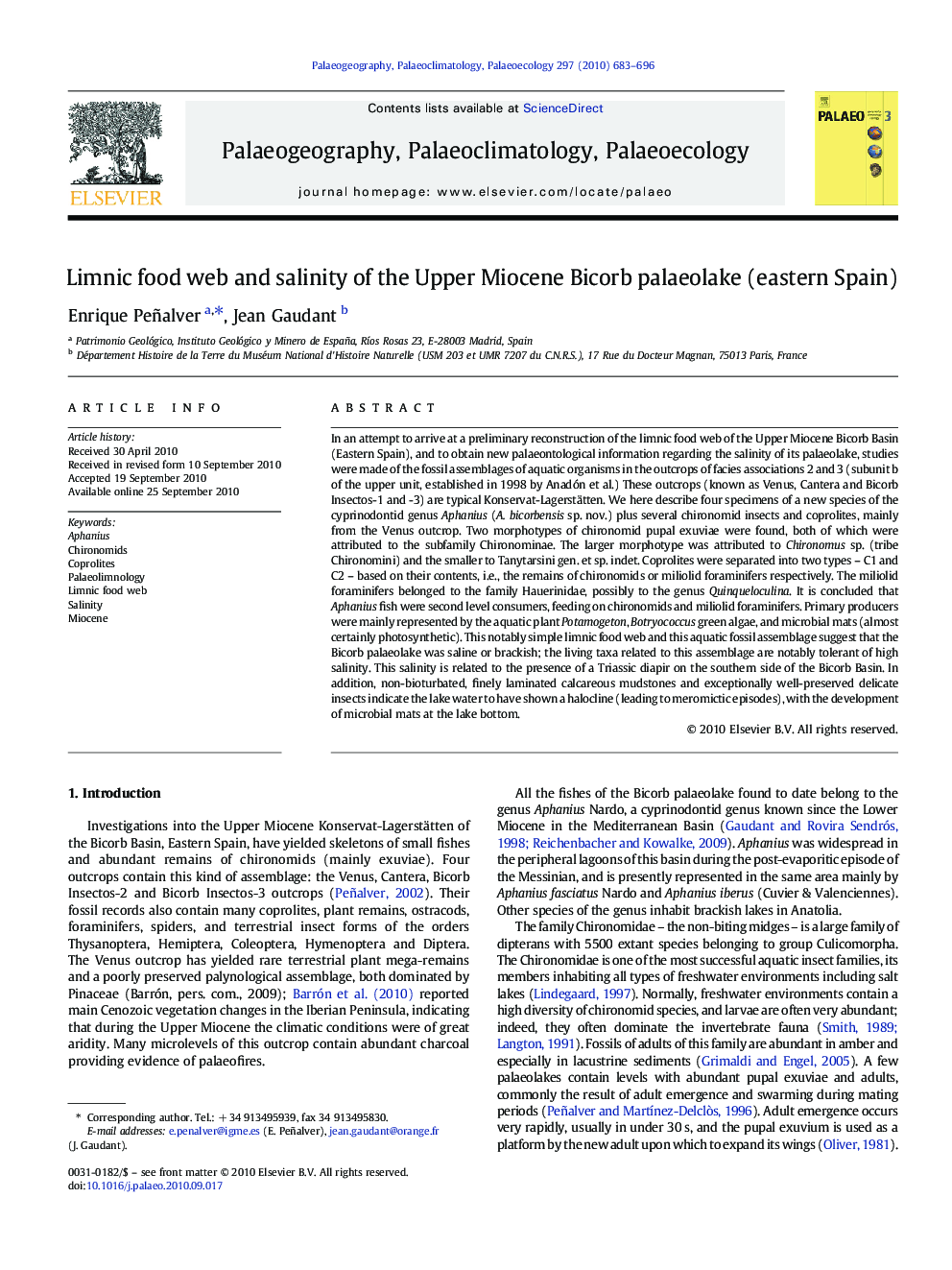| کد مقاله | کد نشریه | سال انتشار | مقاله انگلیسی | نسخه تمام متن |
|---|---|---|---|---|
| 4467467 | 1622268 | 2010 | 14 صفحه PDF | دانلود رایگان |

In an attempt to arrive at a preliminary reconstruction of the limnic food web of the Upper Miocene Bicorb Basin (Eastern Spain), and to obtain new palaeontological information regarding the salinity of its palaeolake, studies were made of the fossil assemblages of aquatic organisms in the outcrops of facies associations 2 and 3 (subunit b of the upper unit, established in 1998 by Anadón et al.) These outcrops (known as Venus, Cantera and Bicorb Insectos-1 and -3) are typical Konservat-Lagerstätten. We here describe four specimens of a new species of the cyprinodontid genus Aphanius (A. bicorbensis sp. nov.) plus several chironomid insects and coprolites, mainly from the Venus outcrop. Two morphotypes of chironomid pupal exuviae were found, both of which were attributed to the subfamily Chironominae. The larger morphotype was attributed to Chironomus sp. (tribe Chironomini) and the smaller to Tanytarsini gen. et sp. indet. Coprolites were separated into two types – C1 and C2 – based on their contents, i.e., the remains of chironomids or miliolid foraminifers respectively. The miliolid foraminifers belonged to the family Hauerinidae, possibly to the genus Quinqueloculina. It is concluded that Aphanius fish were second level consumers, feeding on chironomids and miliolid foraminifers. Primary producers were mainly represented by the aquatic plant Potamogeton, Botryococcus green algae, and microbial mats (almost certainly photosynthetic). This notably simple limnic food web and this aquatic fossil assemblage suggest that the Bicorb palaeolake was saline or brackish; the living taxa related to this assemblage are notably tolerant of high salinity. This salinity is related to the presence of a Triassic diapir on the southern side of the Bicorb Basin. In addition, non-bioturbated, finely laminated calcareous mudstones and exceptionally well-preserved delicate insects indicate the lake water to have shown a halocline (leading to meromictic episodes), with the development of microbial mats at the lake bottom.
Journal: Palaeogeography, Palaeoclimatology, Palaeoecology - Volume 297, Issues 3–4, 20 November 2010, Pages 683–696